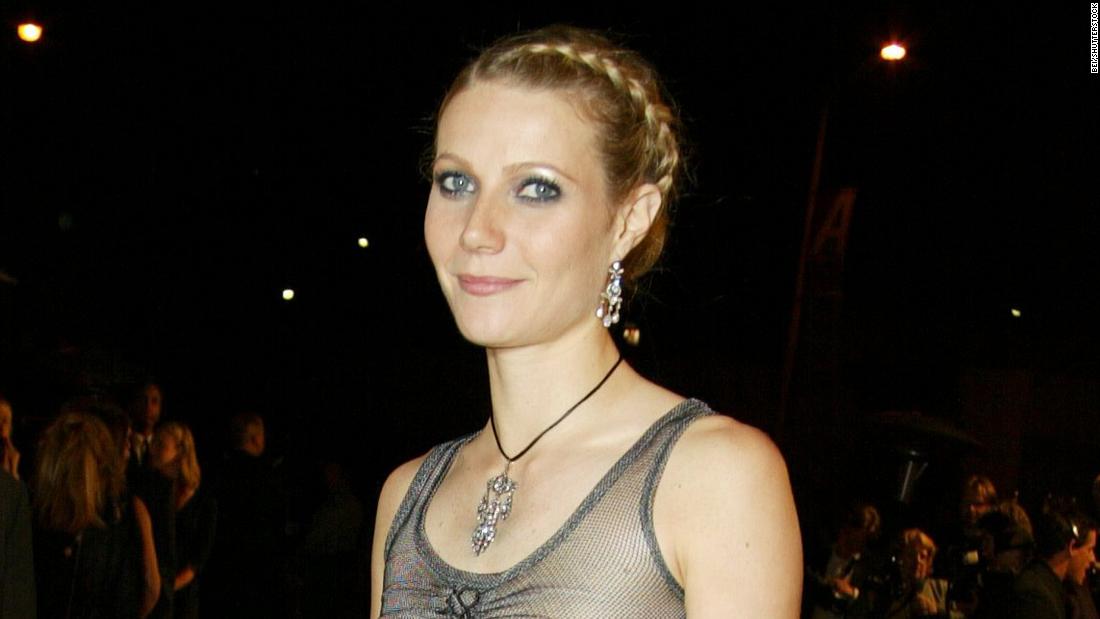Was this the worst night in Oscars fashion history?
More damming reviews were saved for the year’s best supporting actress, Jennifer Connelly, who opted for a dishwater-colored tulle gown and not-quite-matching scarf (a shade described by Smith as “pale dung-colored,” and by Scripps Howard news agency as “phlegm-colored”). Elsewhere, Cameron Diaz divided opinions in a floral print dress, ’80s Oscar-nominee Sally Kirkland sported an ill-advised bejeweled bindi and Faith Hill took a painfully literal approach by teasing her performance of “Somewhere Over the Rainbow” with a strappy rainbow-colored Versace gown.

Variously described as “pale dung-colored” and “phlegm-colored,” Jennifer Connelly’s gown was one of the night’s many flops. Credit: Steve Granitz/WireImage/Getty Images
The night will, however, always be remembered for one of the most maligned outfits in Oscars history: Gwyneth Paltrow’s infamous “goth” dress (pictured top). The formless Alexander McQueen creation featured a scrunched-up taffeta skirt and sheer bodice that left little to the imagination. The actress’ heavy eye makeup and milkmaid braid helped secure the outfit’s place on “worst-dressed” lists for years to come.
There was, arguably, worse to come. At the Vanity Fair afterparty, “Meet Joe Black” star Claire Forlani wore what can only be described as a sequined breastplate held up by perilously thin string ties; Selma Blair arrived in a barely-there fringe dress that looked more like a shabby tablecloth and Heather Mills opted for a bizarre midriff-bearing two-piece. Actress and author Suzanne Somers’ dress might easily have doubled up as cheap curtains, and TV host Daisy Fuentes showed up in jeans and a blouse, as if she had forgotten it was one of Hollywood’s most exclusive parties.

The afterparty saw even more classic Y2K style, like Claire Forlani’s open-backed crop top. Credit: Gregg DeGuire/WireImage/Getty Images
Most boring ‘of all time’
This was no excuse for Menkes, however. Calling attendees’ efforts “the most boring Oscar outfits of all time,” the critic singled out Naomi Watts’ unadventurous corseted dress from a “sea of black,” writing that “even Gucci, usually a dead cert for sexy clothes” had made the star look “sedate.”

Naomi Watts was one of several stars opting for low-risk black gowns. Credit: KMazur/WireImage/Getty Images
“There became a realization that those dresses were going to define you. And I think it had more to do with the rise of fashion as a pop-culture force — and a real-time force — and realizing that people were sat at home judging these outfits.
“There was no E! and no pre-show until then, and I think that choices were probably safer because of not knowing how to navigate that.”
As for the riskier looks, Critchell theorized that many celebrities were “playing against type” by offering something unexpected or different from previous outings. Nicole Kidman’s frilly pink Chanel gown contrasted with the elegant chartreuse Dior dress she famously wore to 1997’s ceremony, while Jennifer Lopez’s classic gown and bouffant hairstyle was juxtaposed against the raunchier looks she’d become known for.

Sally Kirkland sports a bejewled bindi as part of her gold-and-silver look. Credit: David Lefranc/Gamma-Rapho/Getty Images
Even Paltrow’s outfit can be seen as an attempt to avoid being pigeonholed, Critchell said. “She had been the princess a few years before (in 1999) in that pink Ralph Lauren dress, and I think she was playing against that,” she added.
“Celebrities didn’t have a chance to show their other sides in the way they do now. You already know them, you what their style is, you know their opinion on everything. But it wasn’t uncommon in 2002, or any of those other (pre-social media) years, for someone to play against what they did before, because they didn’t want to be stereotyped.”
Rays of hope

One of the night’s few winners: Halle Berry in Elie Saab. Credit: Steve Granitz/WireImage/Getty Images
There was really only one winner, though — on both the red carpet and the awards stage. On her way to becoming the first Black woman to claim the Academy Award for best actress, Halle Berry stunned in gown that transformed the fortunes of its designer, Elie Saab. Like Paltrow’s outfit, it consisted of sheer top and taffeta skirt, though Berry oozed glamour in crimson and champagne, with strategically placed floral detailing completing the look.
“I think Halle Berry’s outfit has stood the test of time,” Critchell said. “It’s not a dress someone would wear today, but she was the belle of the ball. She was predicted to win and, as fashion writers, we were all waiting for her turn. It fulfilled the moment; it was memorable, and it was right for a best actress.”
Yet, while the outfit is now considered among the Oscars’ best-ever looks, it wasn’t a hit with everyone on the night. The Guardian’s Cartner-Morley wrote that Berry’s outfit, complete with its “gaudy embroidered net bodice,” had offered “plenty to cringe about.”
Related video: A brief history of the red carpet
Her contrarian take serves as a reminder that good red carpet style is in the eye of the beholder — and thus the question of whether 2002 was the Oscars’ worst year depends, as ever, on who you ask. Indeed, given the current interest in all things Y2K — a revival that has heralded the return of low-rise jeans, crop tops and butterfly clips — the power of hindsight (and the opinions of Gen-Z fashion-watchers) may be kinder to 2002’s outing than one might expect.
“I don’t think it was the worst-dressed,” Critchell said. “I don’t know if there would ever be a moment you could define as that. But it was a different time.”
For all the latest world News Click Here

